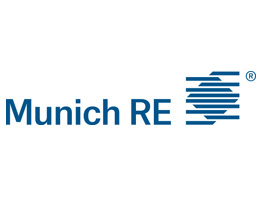6 Commonsense Ways to Quantify and Mitigate Flood Risk
Climate risk is dominating leaders’ concerns for the future for the first time, according to this year’s World Economic Forum’s Global Risk Report, which notes “extreme weather” and “failure to mitigate and adapt to climate change” are the most likely risks to watch over the next decade.
For risk managers, that means threats from the environment, such as droughts, floods and wildfires, are expected to have even more impact, as seen in catastrophe-related headlines from the past year.
Additionally, the financial pressure on risk managers and businesses to address these climate threats is expected to continue mounting.
It is the experience of my company, FM Global, that much of the loss from climate risk can be prevented by suitable adaptation measures.
As a nation, the most pressing and perhaps easiest of these risks to address is flooding.
Late last fall, I testified before Congress to urge revision and passage of the Water Resources Development Act of 2020, which would provide funding for the U.S. Army Corps of Engineers to assess and mitigate damage to the nation’s aging levee system.
The American Society of Civil Engineers estimates $80 billion is needed in the next 10 years to maintain and improve the nation’s levees. Yet, the solution is not a simple case of federal funding for federally owned levees or for those owned by states and municipalities that have limited budgets for repair and maintenance.
The U.S. needs a cohesive flood-loss prevention policy for designing, implementing and maintaining regional systems that use a spectrum of combined measures to manage our largest flood-exposed areas. The cost of implementation will be offset by avoided loss and economic stability for flood-prone regions over the longer term.
These solutions will take years to come to fruition and so need to start now.
In the meantime, absent a comprehensive national flood-loss prevention policy, there are steps risk managers can take to protect property from the risk of high water and improve business resiliency.
Quantifying the Risk — Six Questions to Ask
It starts with risk managers asking simple questions:
1) Which properties are exposed?
2) Which parts of each exposed property are threatened?
3) How deep could the water get?
4) What damage would the water do?
5) How much would the damage cost?
6) How much would eliminating or mitigating the risk cost?
Mitigating the Risk — Six Solutions
While locating well outside a flood zone or building on higher ground is always the best solution, it may not be the most practical or cost-effective for many businesses.
For those locations in flood zones, there are temporary flood-loss prevention solutions that will help maintain business value when flooding is imminent. When these solutions have been tested and certified to the American National Standards Institute FM 2510 standard for flood mitigation equipment, users can be confident they will work as intended.
They include:
1) Perimeter barriers: Emergency structures that, when deployed, are intended to protect buildings and equipment from rising water. These temporary perimeter barriers have been evaluated for their ability to control riverine- or rainfall-related flood conditions.
2) Opening barriers: Permanent or temporary devices, such as flexible walls or stackable aluminum gates, that prevent floodwater passage through doors, windows, vents and other openings in a building.
3) Flood mitigation valves: Devices that block floodwaters from entering buildings through overwhelmed drainage systems. These valves prevent buildings from flooding from the inside out or bottom up.
4) Flood mitigation pumps: Devices that remove water already entering buildings or underground passages and can help mitigate damage from corrosion and mold.
5) Penetration sealing devices: Products that are used to seal small openings in a building.
6) Flood glazing: Reinforced glass structures that serve as flood barriers in urban settings.
Using Technology
Addressing flood risk requires informed decision making by risk managers and facility managers.
In that regard, there is a role for current and future advanced technology in improving early flood warning, better responding to floods in progress and improving long-term planning. These improvements include deployment of both on-the-ground and remote sensing at a greater scale, the ability to transfer and openly communicate information, and the ability to allow more innovation in loss prevention products based on increased real-time insight.
Businesses should look to their local, state and federal government authorities as partners in deploying and maintaining these measures.
As employers in the region, businesses have a powerful voice if they use it productively.
Choosing Resilience
While some might see risk transfer via insurance as the solution to flood damage, unfortunately, even the most comprehensive insurance policies fail to cover the total financial loss when flood damage disrupts a business.
A disruption not only affects immediate revenue but also takes a longer-term toll on market share, shareholder value, supply chain integrity, reputation, investor confidence and growth. In the aggregate, these long-term losses to U.S. businesses erode our country’s economic competitiveness.
When it comes to our nation’s flood resilience, the risk for American businesses is real.
Insurance is not enough.
Yet, through science and tested solutions, as well as strong and sustained public-private partnerships, business and government together can better assess risks and develop a national strategy to reduce them, thereby preserving and enhancing U.S. economic competitiveness. &










